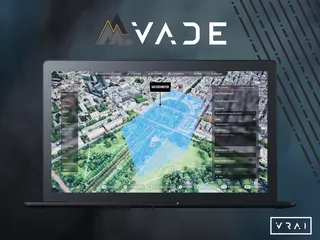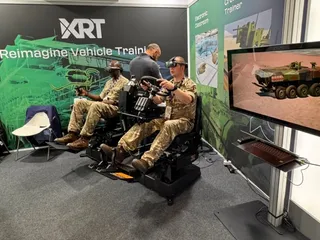The Only Way is Up
Contact Our Team
For more information about how Halldale can add value to your marketing and promotional campaigns or to discuss event exhibitor and sponsorship opportunities, contact our team to find out more
The Americas -
holly.foster@halldale.com
Rest of World -
jeremy@halldale.com

For most people in the aviation training industry, the key benchmarks and predictions come from the major global players of ICAO, IATA and, of course, the aircraft manufacturers. Both Airbus and Boeing apply considerable resources to research and publish comprehensive forecasts of future demand, and for those in the industry who don't have the means to carry out as complete a survey, these are a critical source of information with which to do their own planning. But all too often the headlines imply that the burgeoning new aircraft sales are the sole source of training demand.
Patently that is not the complete picture, so it is worth listening to others who are in the workplace who are directly involved in either providing the training tools or delivering training across the range of disciplines.
Mature Markets
There is general agreement that within the USA and Europe there is either flatline training demand or, at best, slow growth. However, that does not mean that there is no training requirement. The sheer scale of both of those markets means that there is a significant on-going training need, and whilst there is a pent up demand for new equipment and training systems, at the moment there is only very limited cash available.
Not only is recurrent training on the existing large fleets an essential task, but, in the USA at least, as a result of airline mergers and fleet rationalisation, there is a strong market to convert crews to different aircraft types. Because these are generally legacy airframes, there is already a well-established training infrastructure available; the drive therefore is to use existing platforms more efficiently. The fact that this form of training involves older aircraft types, and has to take place in an environment of tight financial constraints, has resulted in a rapidly increasing use of recycled aircraft parts to provide, for instance, actual fuselage sections and over-wing exits to build very effective but (relatively) low cost cabin crew training tools. Similarly the use of recycled cockpits to serve as a base for more sophisticated training aids, up to full flight simulators, may not have the glamour of the high-end devices, but can be very attractive when costs are compared.
Reinvigorating some of the earlier generation of training tools with updated software and capability also has its place. This market has been around for some time, but recently seems to be gaining traction as airlines and training providers continually search for less costly solutions.
In the ab-initio pilot training market there has been a huge impact on demand, not of the airlines, but of a generation of potential new entrants in these mature markets, where the consequences of the 1500 hour rule in the USA, and the high cost of entry into the industry has drastically reduced student entries.
Developing Markets
The real excitement is generated by the growth of the industry away from those baseline markets. In many ways the Gulf airlines should perhaps no longer be regarded as part of the developing markets – it is true that they are still expanding, but many of them are now well and truly established. There is certainly further significant growth predicted there if the huge aircraft orders are anything to go by, but that expansion is based on growing an existing infrastructure. One challenge to the smaller players in penetrating this market is that, frequently, the involvement of local partners and the requirement for local control is a legal imperative. When your company is not big in international terms, finding such influential partners can be a challenge and has perhaps slowed the opening of this market to the smaller provider.
Now that the centre of gravity of the aviation industry has been recognised as moving away from the traditional bases, the forward planning has moved with it, and not only to Asia. Eyes are turning to South America and Africa as expanding markets where there is not only increasing demand but, where critically, the other essential element for development – funding, is being made available as the resources of these regions are becoming fully exploited. Ethiopia is a classic example of this.
Where these new markets are really exciting is where there is either limited or expanding infrastructure. This is where the majority of new aircraft sales take place, and therefore where training tools appropriate for the latest generation of aircraft are needed. The opportunities for companies with the vision and will to present their offerings are still growing, not just in tandem with the newly-delivered western-built aircraft, but also to support the likes of China, Russia and Japan who are determined to build up their indigenous aircraft manufacturing capability.
Return to Instructors
Whilst the use of technology to enhance training is essential, one ingredient of training which is regaining importance is that of the instructor. Now that the generation which has been brought up using online training and e-learning of whatever type has been in service, there has often been a noticeable shortfall in retained knowledge later on in their careers. Those with hands-on experience of delivering training on a more modest scale are noticing that the refresher courses, or those courses notionally building on earlier qualifications, sometimes reveal a fundamental lack of understanding of basic principles. The view offered by such training providers is that whilst a quick multi-choice exam completed immediately after a course of online study will usually yield competent results, the lack of interaction with an instructor means that essential understanding, as opposed to rote learning, can result in basic principles not being absorbed. This makes application of that knowledge later on in operation or during additional training problematic.
The answer, they say, is to have good instructors involved throughout the learning process. The key, as ever, is to use the appropriate technology in the right context. One interesting observation is that with the increasing use of, for instance, iPads, there is little differentiation between a purely leisure activity driven through the iPad, and the serious work of study. Consequently the average human finds it challenging to differentiate between that knowledge which must be retained and that which is for fleeting amusement. This was not a comment delivered through the rigour of academic study, but rather the view of an experienced professional, but it is certainly worth thinking about.
Overall Optimism
As expected, the global training industry has variation in both level of demand from a regional perspective and type-specific training. The important lesson is that there are many reasons for optimism; in spite of local flatlining in growth, the overall picture is one of increasing expansion.
No industry is free from the consequences of some form of global slowdown, but at the moment the only way is up.


